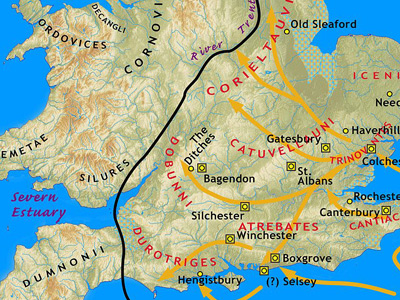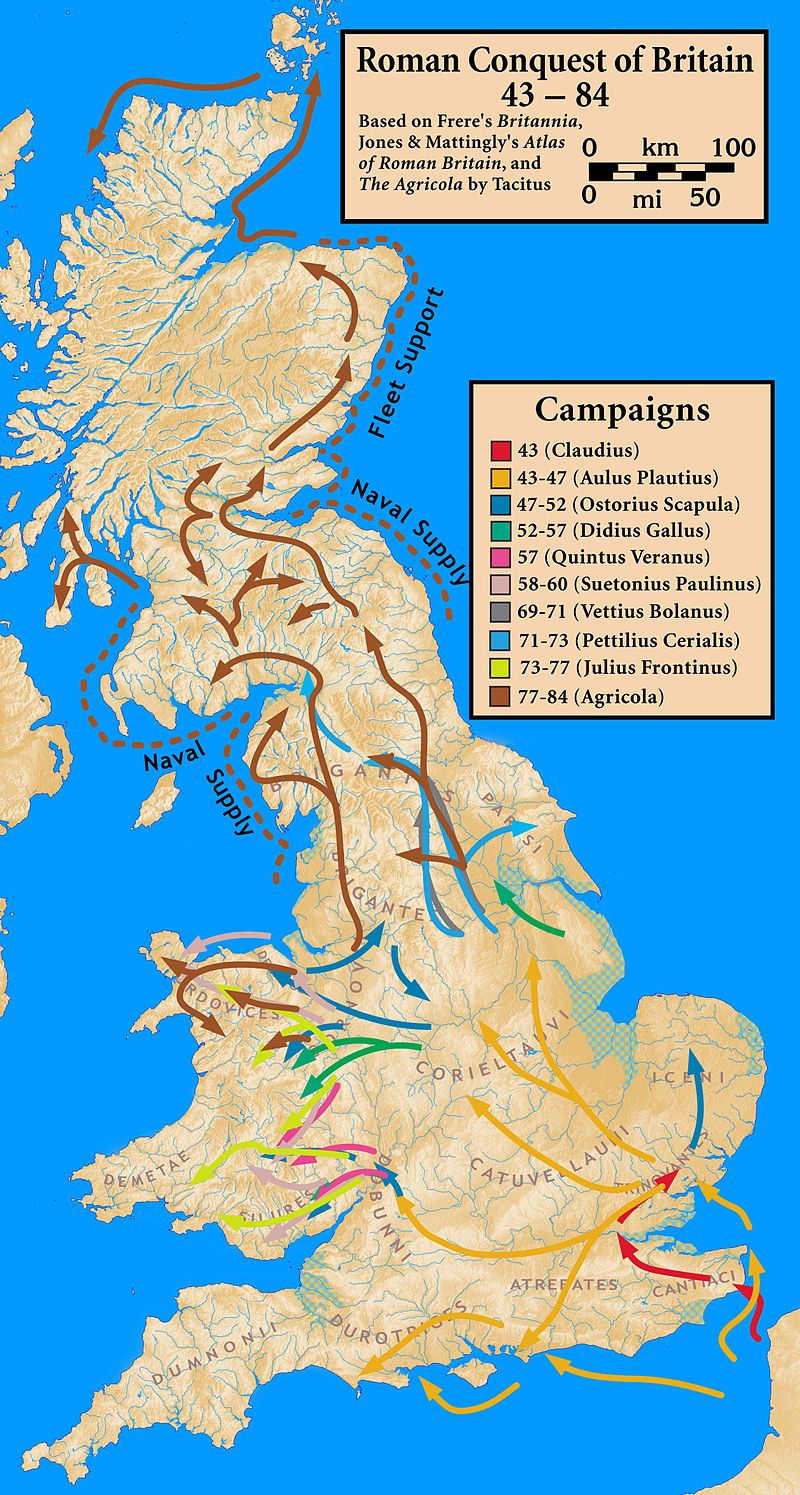Roman conquest of Britain (43-96 AD)
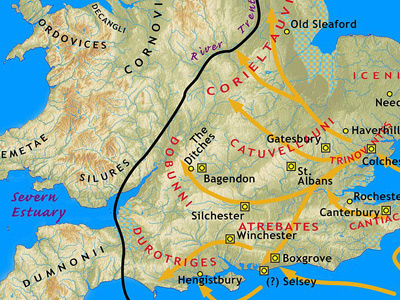
(44–60 AD)
Vespasian took a force westwards subduing tribes and capturing oppida as he went, going at least as far as Exeter which would appear to have become an early base for Leg. II Augusta and probably reaching Bodmin. Legio IX Hispana was sent north towards Lincoln (Latin: Lindum Colonia) and within four years of the invasion it is likely that an area south of a line from the Humber to the River Severn Estuary was under Roman The Roman Empire was the post-Republican period of ancient Rome. As a polity, it included large territorial holdings around the Mediterranean Sea in Europe, North Africa, and Western Asia, and was ruled by emperors. The first two centuries of the Roman Empire saw a period of unprecedented stability and prosperity known as the Pax Romana ('Roman Peace'). The Empire was later ruled by multiple emperors who shared control over the Western Roman Empire and the Eastern Roman Empire. control. That this line is followed by the Roman road of the Fosse Way has led many historians to debate the route's role as a convenient frontier during the early occupation. It is more likely that the border between Roman and Iron Age Britain was less direct and more mutable during this period however.
The Roman Empire was the post-Republican period of ancient Rome. As a polity, it included large territorial holdings around the Mediterranean Sea in Europe, North Africa, and Western Asia, and was ruled by emperors. The first two centuries of the Roman Empire saw a period of unprecedented stability and prosperity known as the Pax Romana ('Roman Peace'). The Empire was later ruled by multiple emperors who shared control over the Western Roman Empire and the Eastern Roman Empire. control. That this line is followed by the Roman road of the Fosse Way has led many historians to debate the route's role as a convenient frontier during the early occupation. It is more likely that the border between Roman and Iron Age Britain was less direct and more mutable during this period however.
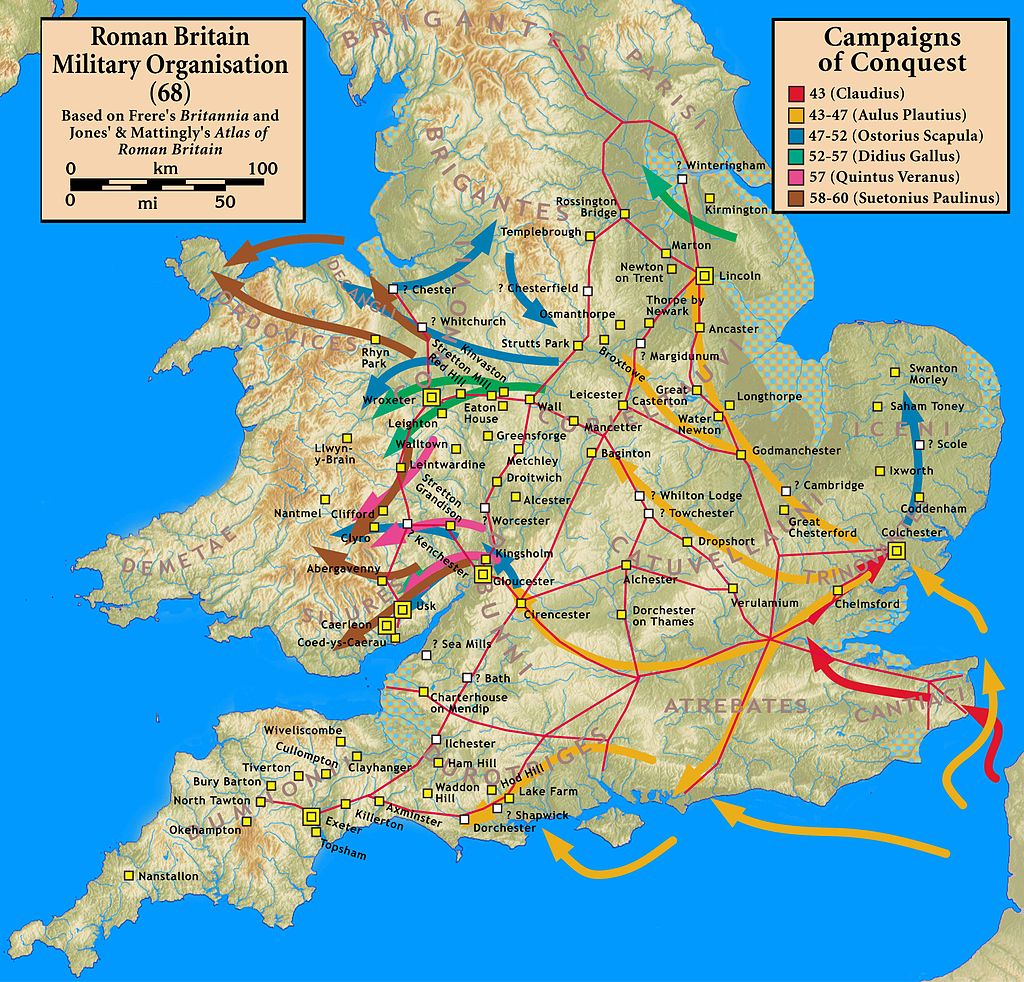
Roman campaigns from AD 43 to AD 60

Roman campaigns from AD 43 to AD 60
( Click image to enlarge)
Late in 47 the new governor of Britain, Publius Ostorius Scapula, began a campaign against the tribes of modern-day Wales, and the Cheshire Gap. The Silures of southeast Wales caused considerable problems to Ostorius and fiercely defended the Welsh border country. Caratacus himself was defeated in the Battle of Caer Caradoc and fled to the Roman client tribe of the Brigantes who occupied the Pennines. Their queen, Cartimandua was unable or unwilling to protect him however given her own truce with the Romans and handed him over to the invaders. Ostorius died and was replaced by Aulus Didius Gallus who brought the Welsh borders under control but did not move further north or west, probably because Claudius was keen to avoid what he considered a difficult and drawn-out war for little material gain in the mountainous terrain of upland Britain. When Nero became emperor in AD 54, he seems to have decided to continue the invasion and appointed Quintus Veranius as governor, a man experienced in dealing with the troublesome hill tribes of Anatolia. Veranius and his successor Gaius Suetonius Paulinus mounted a successful campaign across Wales, famously destroying the druidical centre at Mona or Anglesey in AD 60 at what historians later called the Menai Massacre. Final occupation of Wales was postponed however when the rebellion of Boudica forced the Romans to return to the south east. The Silures were not finally conquered until circa AD 76 when Sextus Julius Frontinus' long campaign against them began to have success.
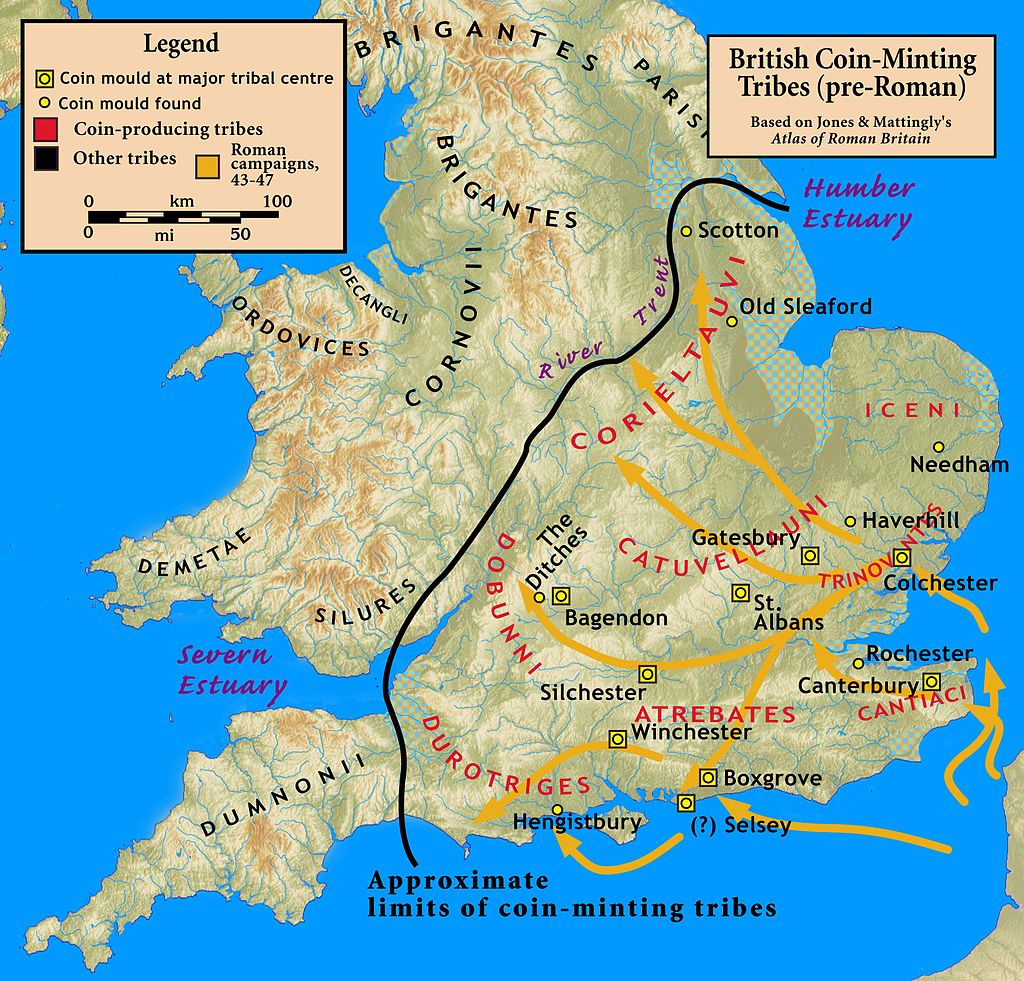
Campaigns under Aulus Plautius, focused on the commercially valuable southeast of Britain

Campaigns under Aulus Plautius, focused on the commercially valuable southeast of Britain
( Click image to enlarge)
HISTORY
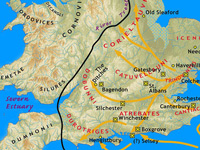
RESOURCES
This article uses material from the Wikipedia article "Roman conquest of Britain", which is released under the Creative Commons Attribution-Share-Alike License 3.0.
© Stories Preschool. All Rights Reserved.
